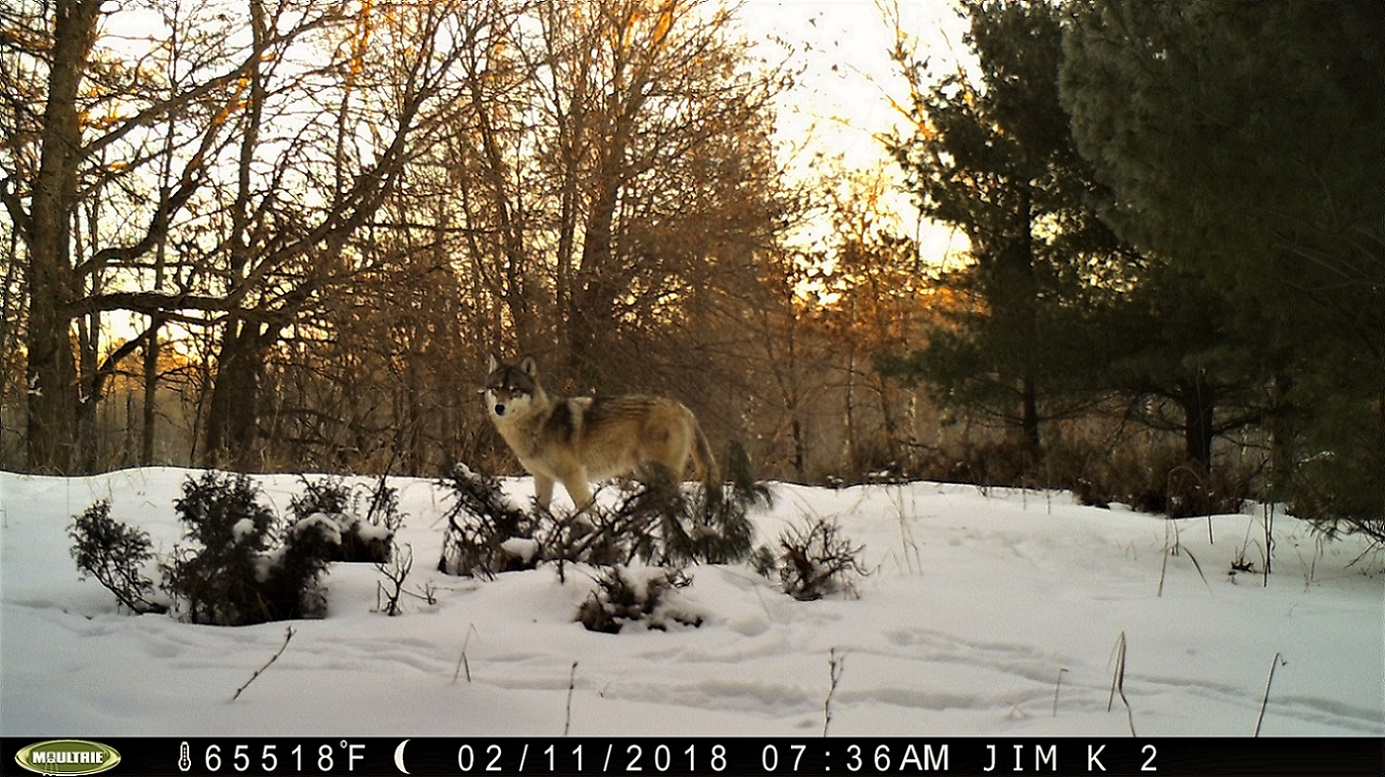Results
Research Findings and other Results
While much of our research is a work in progress, here are some updates from the field!
New paper alert! Human/wildlife coexistence
April 2021: Project leads Dr. Meredith Palmer and Dr. Forest Isbell teamed up with other trail camera ecologists from across North American in a cross-continental study to explore how wildlife co-exist with humans. The answer? It's complicated. 😃 But having volunteers to sort through millions of pictures is helping us to understand what's going on! You can read more about the paper on our blog.
Deer Exclosure and Wolf Urine results published!
January 2021: After submissions, resubmissions, reviews and rewriting, Dr. Meredith Palmer's experimental study on behaviorally-mediated trophic cascades has been published! Dr. Palmer simulated wolf presence (via urine) at a variety of locations around Cedar Creek and then used trail cameras to study whether the fear of wolves would alter deer foraging behavior and consequently plant and soil characteristics. Interestingly, she found that deer did NOT avoid areas with wolf urine, but did significantly shift the time of day at which they foraged. Volunteers may already be familiar with this experiment after looking through thousands of images of deer looking longingly into the exclosures. 😃 Read the whole paper here or check out the research brief!
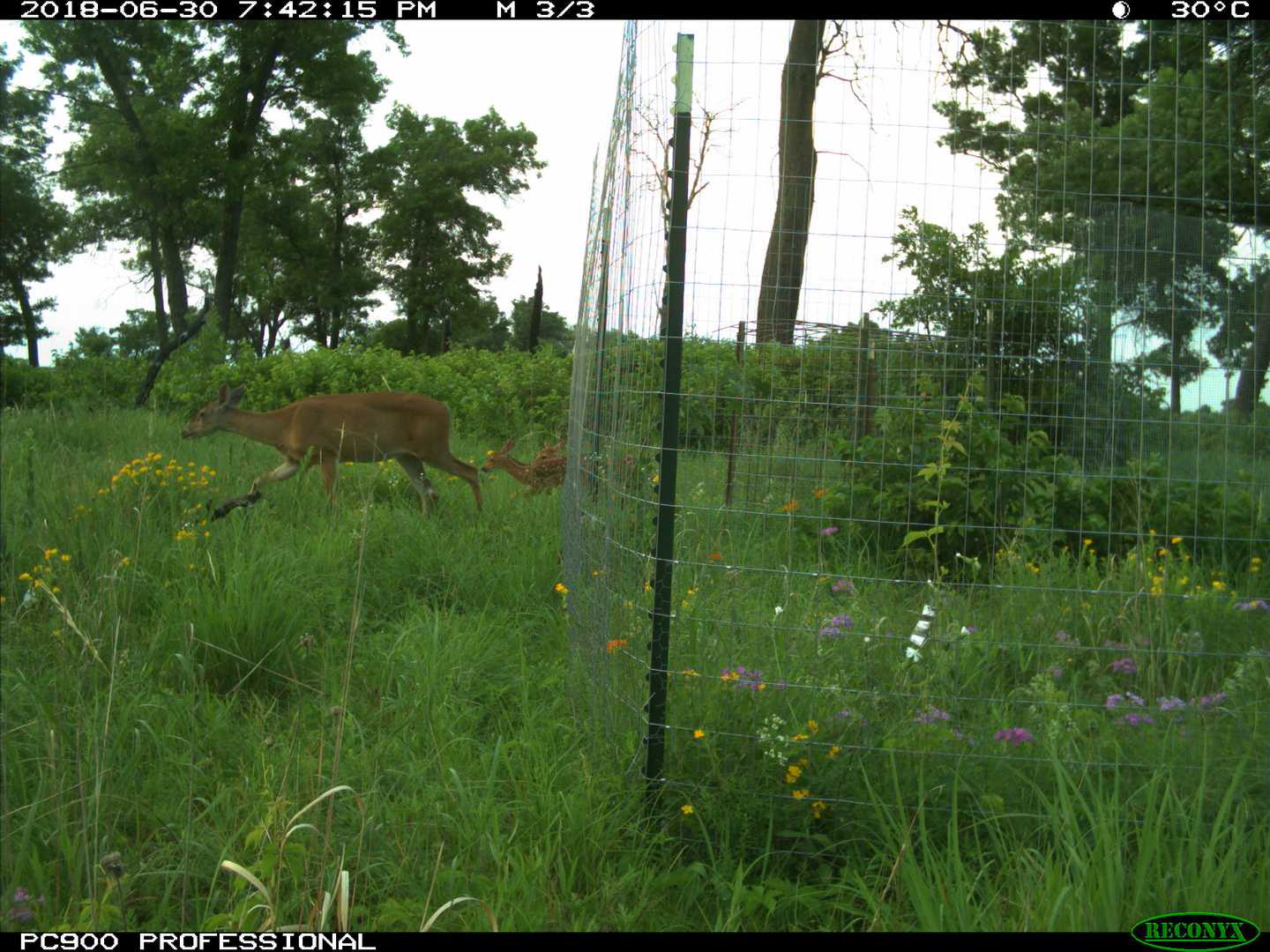
Eyes on the Wild goes on tour
May - December 2020: During the pandemic, local libraries in Minnesota remained open and served an important role connecting the public to books, resources, internet and more. Through our on-going partnership with the Anoka County Library system, Eyes on the Wild was part of that "more" with a traveling exhibit showcasing the project. The display visited four branch libraries, was featured in animal-themed storytimes, and spurred hundreds of new volunteers to classify images.

Eyes on the Wild: on display
November 2019: Some of our volunteers' favorite images went on display at the Coffman Art Galley at the University of Minnesota as part of "Nature: A Fusion of Art and Science". In this art and science crossover exhibition, artists collaborated with University of Minnesota’s Cedar Creek Ecosystem Science Reserve to show how scientists work with nature in their ecological research. Photographer and landscape painter Frank Meuschke photographed the reserve’s scientists, infrastructure, experiments, and natural landscapes. Brian Baumgart tied together science concepts and human experiences through poetry and Tillery Bailey created illustrations for the margins of each poem. Dr. Caitlin Potter has curated photographs taken by remote cameras on the reserve, gifting the viewer with rare snapshots into the lives of undisturbed animals. The exhibition ran from November 7th until January 26th in the Coffman First Floor Gallery.
Another paper!
September 2019: Curious about wolves at Cedar Creek, the inspiration for Eyes on the Wild and charismatic apex predators whose presence helped us to secure funding from Minnesota's Environment and Natural Resources Trust Fund to set up our cameras? You can read about their recolonization success and failure in a new paper out in the journal Canadian Field Naturalist. The authors are project scientists Forest Isbell and Dave Mech, along with Cedar Creek building and grounds supervisor Jim Krueger and USDA Wildlife Biologist John Hart. The paper is available on the journal's website!
First paper out
February 2019: Our collective work is already generating scientific discoveries and new insights into the way animals interact. Project scientist Meredith Palmer and Cedar Creek building and grounds supervisor Jim Krueger recently published a short note in the journal Ethology exploring the 'cleaning mutualism' between bats and deer. This type of relationship has rarely been documented between mammals - and it's particularly surprising and exciting to have a mammalian partner as the pest remover in the interaction! You can read more about the research and find a link to the paper itself on our project blog. The paper was also covered by Psychology Today!
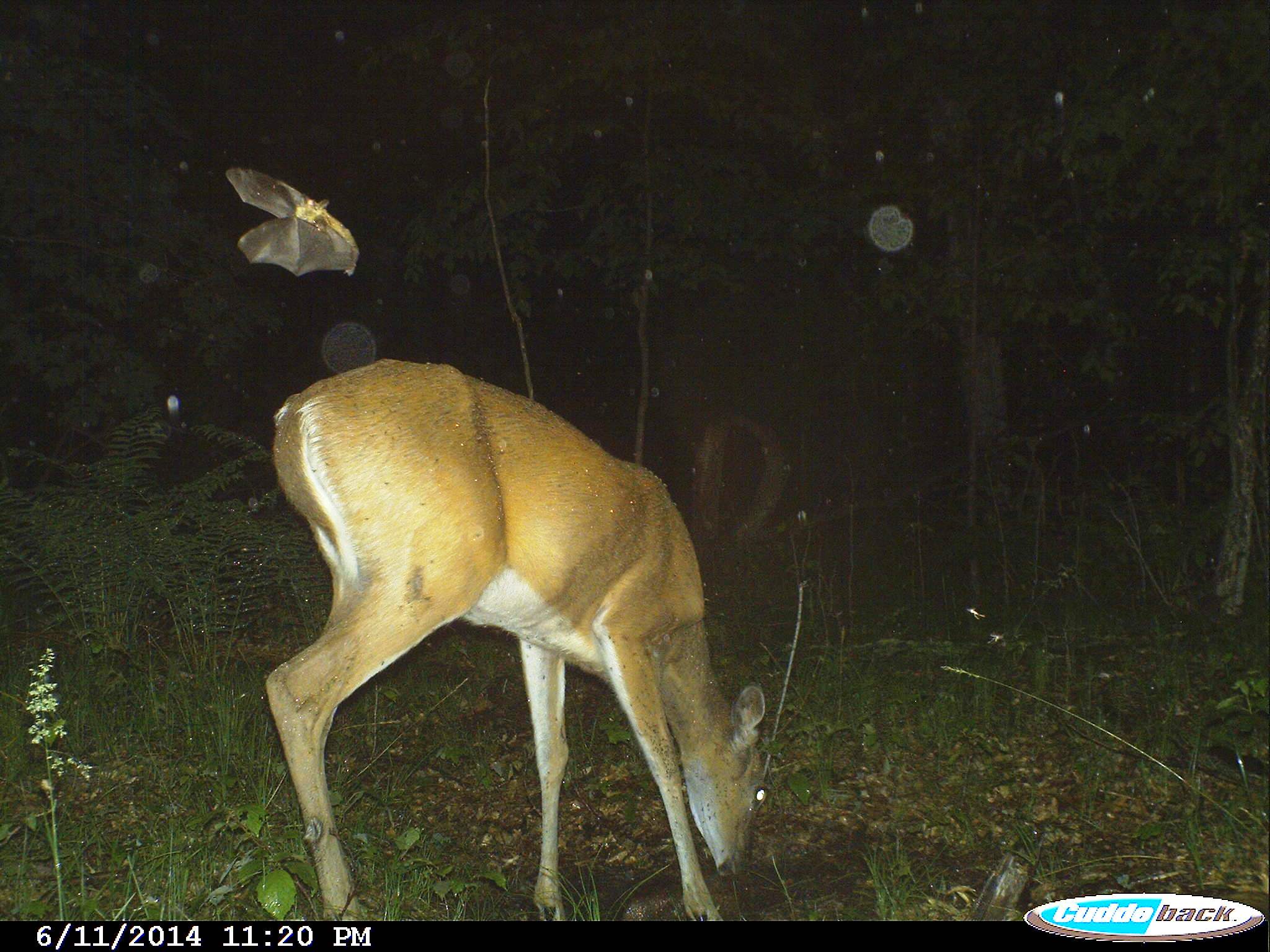
Local News!
January 2020: Check out the Eyes on the Wild spot on our local North Metro TV station!
January 2019: Thanks to your incredible hard work, Eyes On The Wild got written up Minnesota's primary newspaper, the Star Tribune! You can read the article here. Two of our local citizen scientists, Stephanie Johnson and Teresa Root, were featured in the article - highlighting once again the huge contribution our volunteers make to the success of this project. Season 2 images are up and we're excited to see what you find in them!
We also were featured on Channel 5 KSTP News. It's a great story that will give you a chance to see a little of the non-camera landscape of Cedar Creek, follow a set of wolf tracks through the snow, and watch our researchers checking a camera! Of course, the camera crew also included quite a few fabulous pictures from our trail cameras, including some found by volunteers right here in the last few weeks!
First batch COMPLETED!
January 2019: After only a mere three weeks, our hard-working citizen scientist volunteers managed to plow through four months worth of camera trap data! We now have an entire winter season of animal life at Cedar Creek ready to analyze and explore. Everyone has done such an amazing job, and each and every classification made has gone towards help us unlock these data! If you check out our stats page, you can see that we averaged about 20,000 classifications a day - with a few days getting close to 35,000!
But we're not done yet...! Next, we're uploading TWICE AS MUCH imagery from the spring and summer at Cedar Creek. Keep your eyes peeled for baby deer and coyotes, deer with velvet antlers, sandhill cranes and more. Happy classifying!
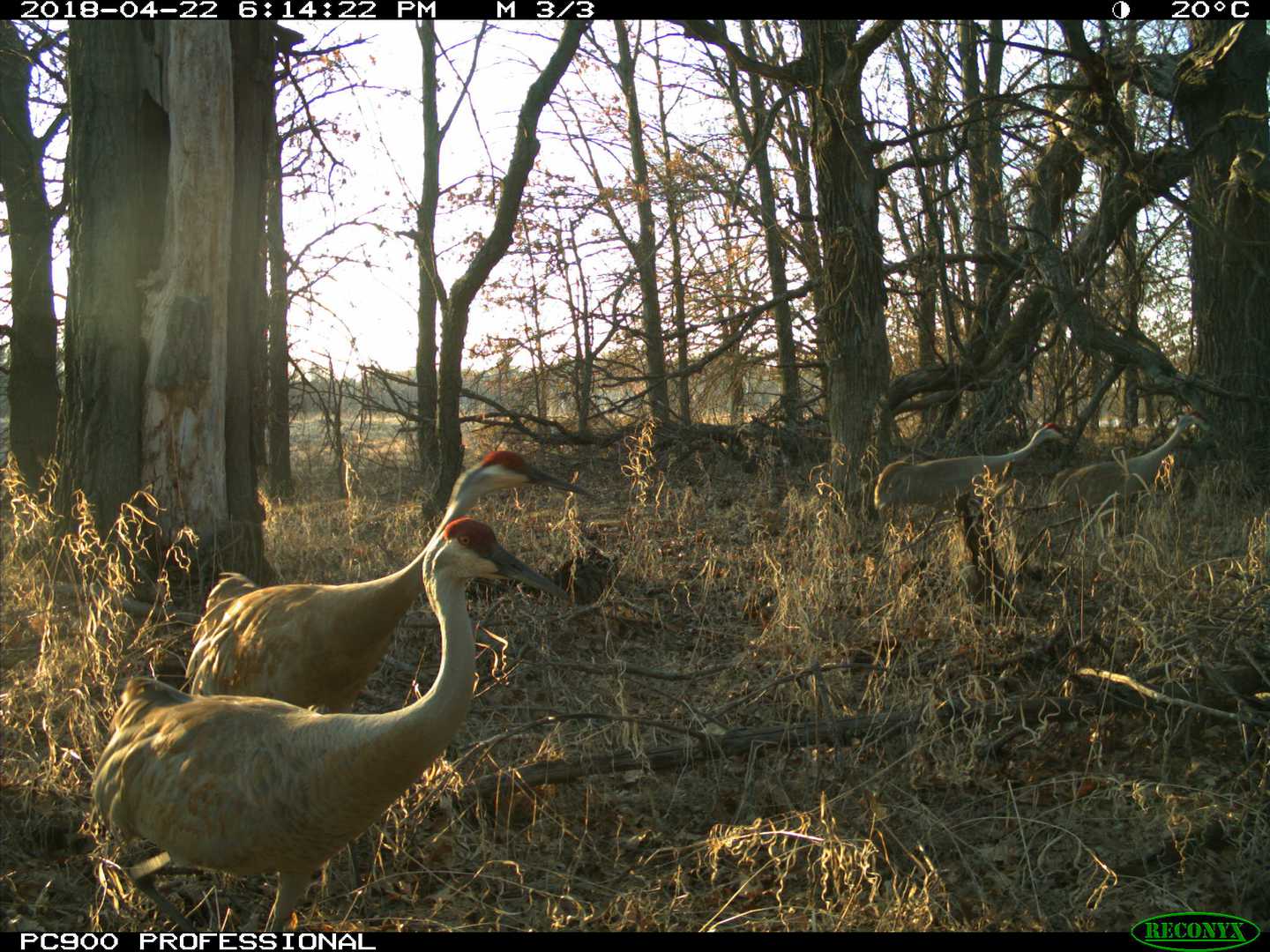
More wolves!
January 2019: Keep your eyes peeled - more confirmed images of wolves captured on Cedar Creek trail camera!
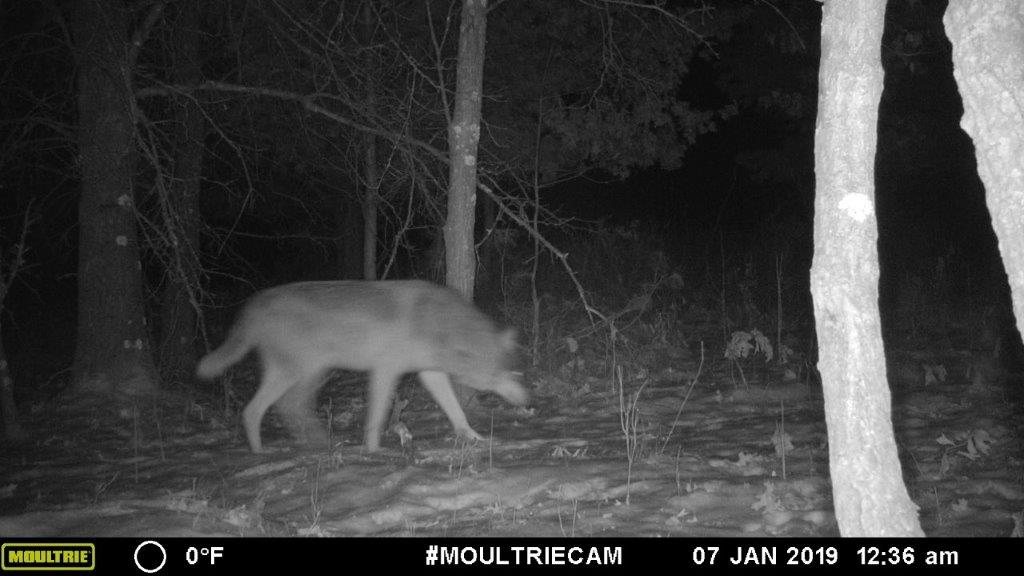
Researchers Caitlin Potter, Meredith Palmer, and Forest Isbell also discovered some fresh wolf prints right next to one of our camera traps ...
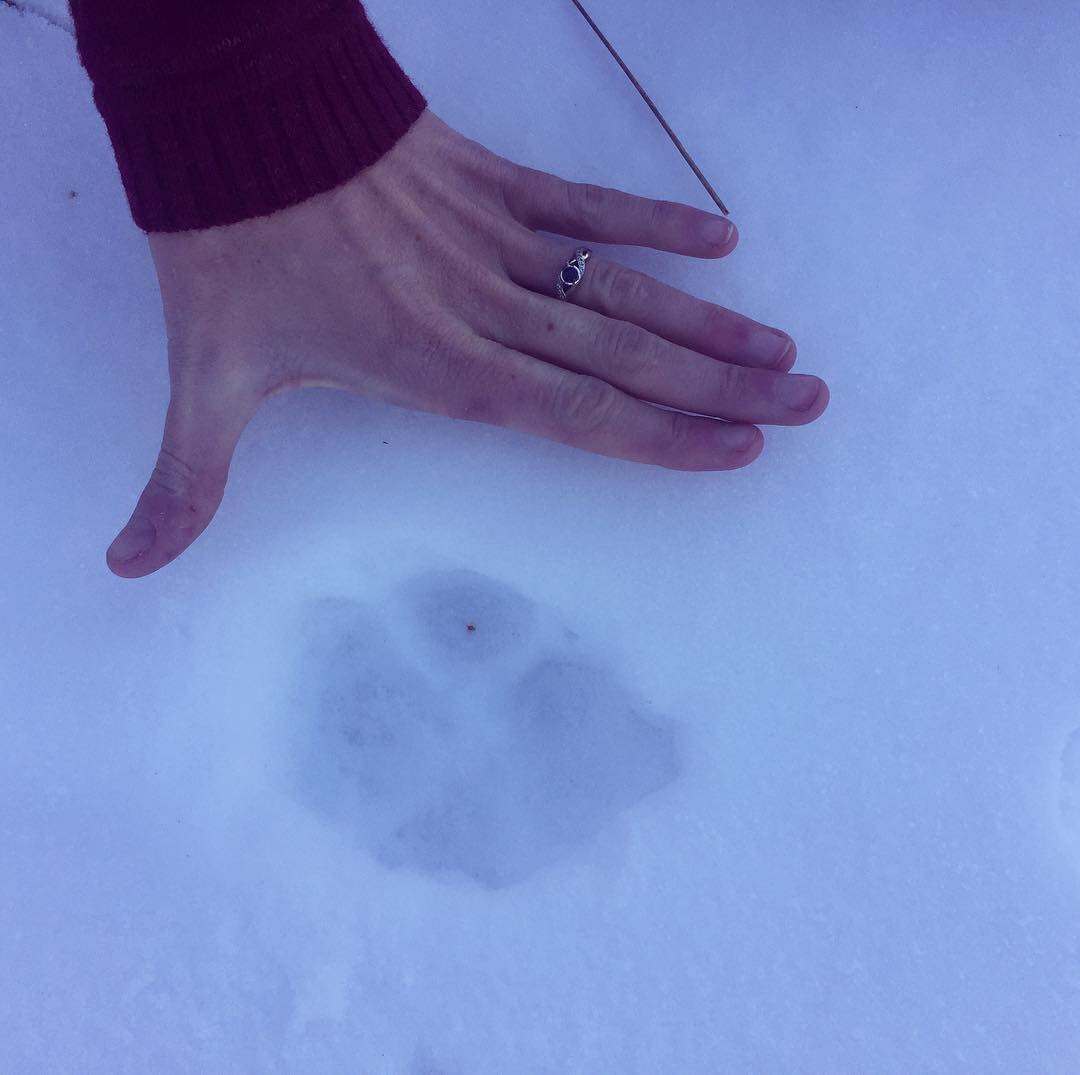


... so we know they're out there!
In the news!
December 2018: Check out coverage of our project on Minnesota Public Radio and in the Brainerd Dispatch!
Online Project Launch!
December 2018: Our first season of images is uploaded to the Zooniverse platform and released to the world! Thanks to all who participated on Day 1 to help build excitement and interest about the project!
Trophic Cascades
August 2018: Throughout the summer, Dr. Meredith Palmer and her assistants have been deploying herbivore exclosures in front of a subset of camera traps to study the effects of deer herbivory on plant communities and soil nutrients. At several of these sites, she has repeatedly been applying wolf urine to simulate the presence of a dangerous predator. This fall, she will be looking to see whether deer avoided areas of "wolf" presence and whether any behavioral changes were strong enough to trickle down to affect ecosystem-level processes.
Camera Trapping
March 2018: Camera traps have been successfully deployed!
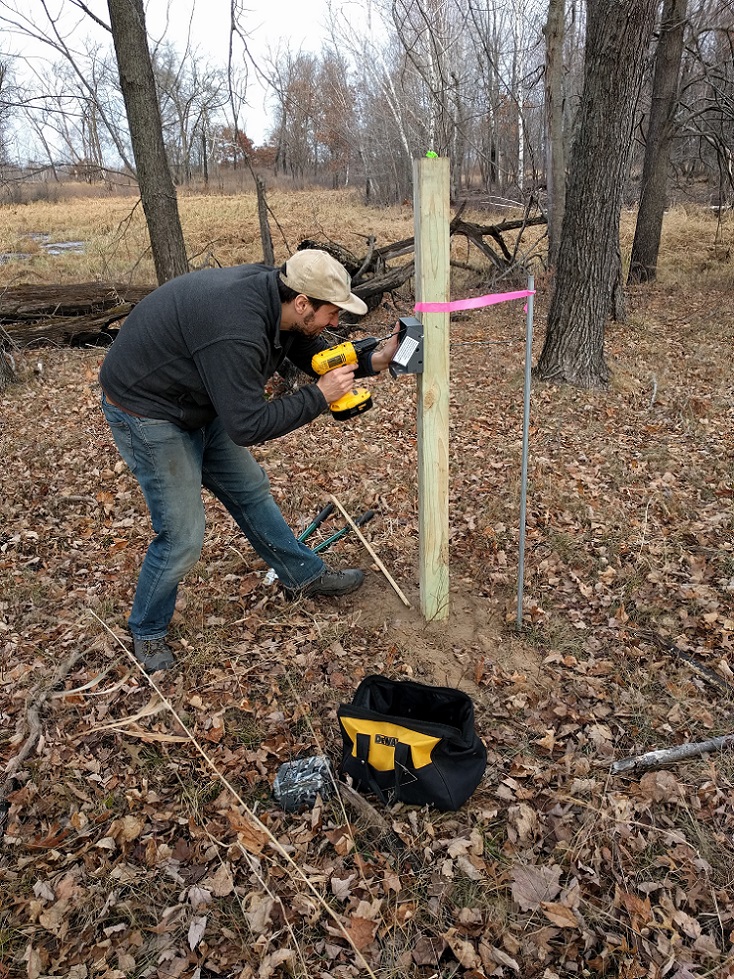 | 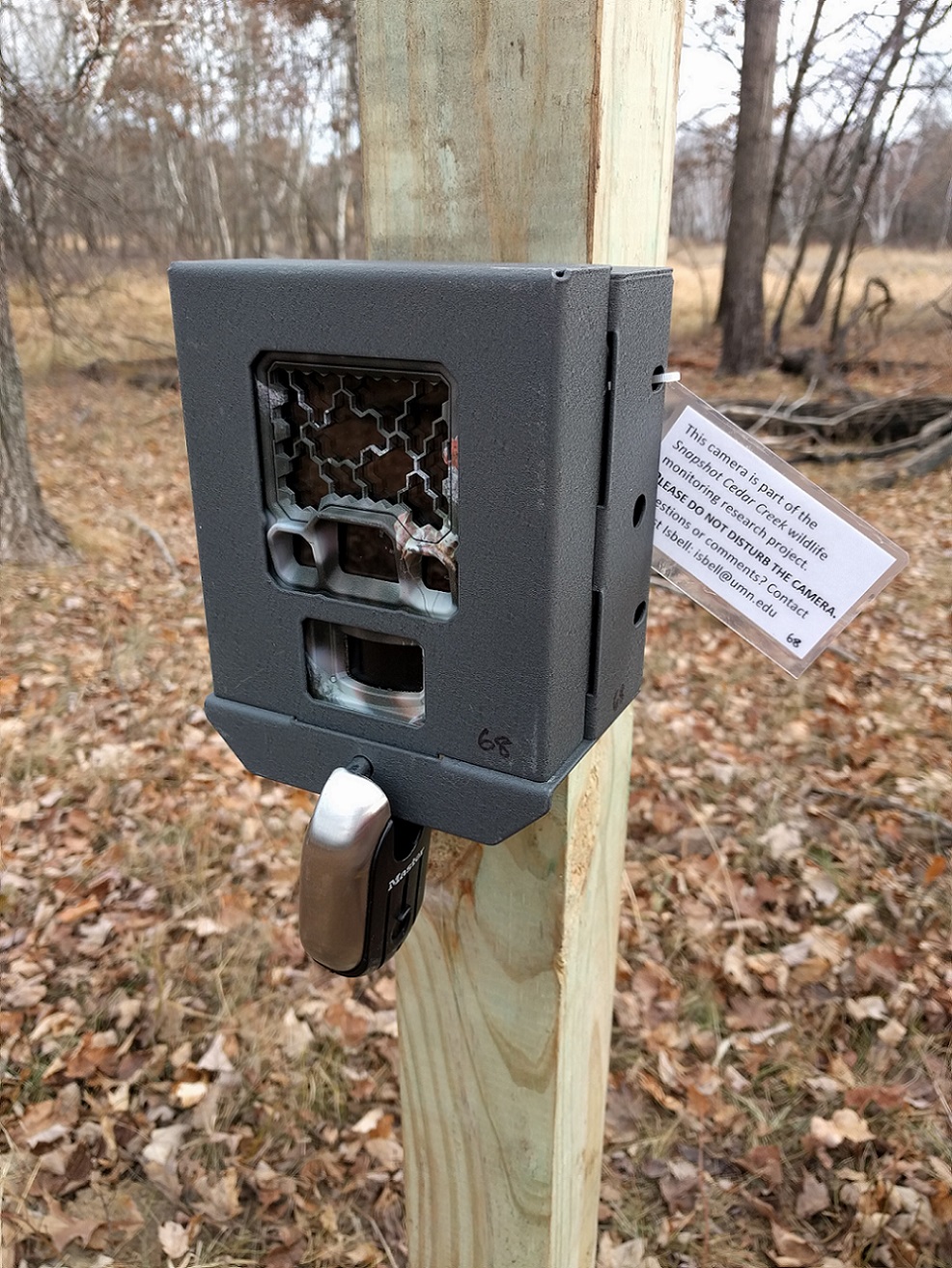 |
Wolves continue to visit Cedar Creek
February 2018: Wolves sighted on the Cedar Creek trail cams! Keep you eyes peeled for more canids on our trail cam images!
